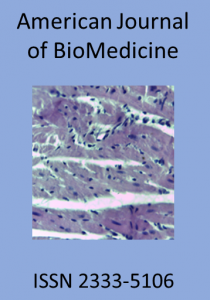Abstract
With resolution of infection, HPV is not thought to be cytopathogenic. In fact, it is thought that the benign behavior of the HPV virus probably allows it to persist in a latent form in normal epithelial tissues. Indeed, most humans infected with oncogenic HPV appear to contain the virus in a dormant or non-replicating state, and the infection is topologically and temporally very stable. The persistence of HPV in stratified squamous epithelium may be dependent on the inability of the innate immune system to detect viral infection in basal epithelial tissues and might involve the limited immunogenicity of early products of the virus. In situ hybridization and PCR methods for detecting viral nucleic acids have shown that in experimental infection with highly oncogenic HPV types, several dysplastic human tissues harbor the virus in a non-cytopathogenic and latent form. Similarly, and in agreement with a viral latency model, it has been shown that the E7 immortalizing activity of HPV-16 can be completely diminished in NIH3T3 cells once pRB is inactivated by a mutation. In this regard, oncogenic HPV types may be similar to other human viruses, which, upon infection, may spontaneously enter an asymptomatic dormant or latent state. Preventive vaccines using virus-like particles are currently in use against HPV infection. They are very efficacious against the two high-risk oncogenic HPVs, which account for a significant percentage of cervical cancers. Virus-like particles are comprised of the L1 capsid protein of the HPV virus and carry no HPV DNA sequences; hence, they do not induce an HPV-related tissue response in the recipient. These vaccines are granted the status of "safe."
Key words: HPV vaccine; Cervical cancer; Cervarix; Gardasil
Copyright © 2014 by The American Society for BioMedicine and BM-Publisher, Inc.
- Cervantes J, Lema C, Hurtado L, Andrade R, Quiroga G, Garcia G, et al. Prevalence of human papillomavirus infection in rural villages of the Bolivian Amazon. Rev Inst Med Trop São Paulo. 2003;45(3):131–135.
- Donegan K, Beau-Lejdstrom R, King B, Seabroke S, Thomson A, Bryan P. Bivalent human papillomavirus vaccine and the risk of fatigue syndromes in girls in the UK. Vaccine. 2013;31(43):4961–4967.
- FUTURE II study group Quadrivalent vaccine against human papillomavirus to prevent high-grade cervical lesions. N Engl J Med. 2007;356:1915–1927.
- Tanaka H, Fujita Y, Takenaka Y, et al. Japanese clinical guidelines for juvenile orthostatic dysregulation version 1. Pediatr Int. 2009;51:169–179.
- Okubo S. Digital plethysmogram. In: Kanai M, editor. Manual of clinical and laboratory medicine. 31. Tokyo: Kanehara Publishing Inc.; 1998. pp. 1546–1547.
- Bruehl S, Harden RN, Galer BS, et al. Extensive validation of IASP diagnostic criteria for complex regional pain syndrome and proposed research diagnostic criteria. Pain. 1999;81:147–154.
- Shoenfeld Y, Agmon-Levin N. ASIA-autoimmune/inflammatory syndrome induced by adjuvants. J Autoimmun. 2011;36:4-8.
- Gisselquist DP. Estimating HIV-1 transmission efficiency through unsafe medical injections. Int J STD AIDS. 2002;13:152–159.
- Wilder RT. Management of pediatric patients with complex regional pain syndrome. Clin J Pain. 2006;22:443–448.
- Cervantes J, Lema C, Hurtado L, et al. Prevalence of human papillomavirus infection in rural villages of the Bolivian Amazon. Rev Inst Med Trop São Paulo. 2003;45(3):131–135.
- Cervantes JL. Multiple human papillomavirus infection: don't forget the genetic background. J Infect Dis. 2011;204(11):1816–1817.
- Goldenberg DL. Diagnosis and differential diagnosis of fibromyalgia. Am J Med. 2009;122(Suppl. 12):S14-S21.
- Moro PL, Zheteyeva Y, Lewis P, et al. Safety of quadrivalent human papillomavirus vaccine (Gardasil) in pregnancy: adverse events among non-manufacturer reports in the Vaccine Adverse Event Reporting System 2006-2013. Vaccine. 2015;33(4):519–522.
- Soldevilla HF, Briones SF, Navarra SV. Systemic lupus erythematosus following HPV immunization or infection? Lupus. 2012;21(2):158–161.
- Richards S, Chalkiadis, Lakshman R, Buttery JP, Crawford N.W. Complex regional pain syndrome following immunization. Arch. Dis. Child. 2012;97:913–915.
- Corona Gutierrez CM, Tinoco A, Navarro T, et al. Therapeutic vaccination with MVA E2 can eliminate precancerous lesions (CIN 1, CIN 2, and CIN 3) associated with infection by oncogenic human papillomavirus. Hum Gene Ther 2004;15:421-31
- Trimble CL, Peng S, Thoburn C, Kos F, Wu TC. Naturally occurring systemic immune responses to HPV antigens do not predict regression of CIN2/3. Cancer Immunol Immunother 2010;59:799-803.
- Steele JC, Mann CH, Rookes S, Rollason T, et al. T-cell responses to human papillomavirus type 16 among women with different grades of cervical neoplasia. Br J Cancer 2005; 93:248-59.
- Nagaraj S, Gupta K, Pisarev V, et al. Altered recognition of antigen is a mechanism of CD8+ T cell tolerance in cancer. Nat Med 2007;13:828-35.
- Curiel TJ, Coukos G, Zou L, et al. Specific recruitment of regulatory T cells in ovarian carcinoma fosters immune privilege and predicts reduced survival. Nat Med 2004.
- Bais AG, Beckmann I, Lindemans J, Ewing PC, Meijer CJ, Snijders PJ, Helmerhorst TJ. A shift to a peripheral Th2-type cytokine pattern during the carcinogenesis of cervical cancer becomes manifest in CIN III lesions. J Clin Pathol 2005;58:1096-100.
- Kanodia S, Fahey LM, Kast WM. Mechanisms used by human papillomaviruses to escape the host immune response. Curr Cancer Drug Targets 2007; 7:79-89; PMID:17305480.
- Fahey LM, Raff AB, Da Silva DM, Kast WM. Reversal of human papillomavirus-specific T cell immune suppression through TLR agonist treatment of Langerhans cells exposed to human papillomavirus type 16. J Immunol 2009; 82:2919-28.
- Domingos-Pereira S, Decrausaz L, Derre L, et al. Intravaginal TLR agonists increase local vaccine-specific CD8 T cells and human papillomavirus-associated genital-tumor regression in mice. Mucosal Immunol 2013;6:393-404.
- Derre L, Rivals JP, Jandus C, et al. BTLA mediates inhibition of human tumor-specific CD8+ T cells that can be partially reversed by vaccination. J Clin Invest 2010; 120:157-67.
- Blank C, Mackensen A. Contribution of the PD-L1/PD-1 pathway to T-cell exhaustion: an update on implications for chronic infections and tumor evasion. Cancer Immunol Immunother 2007; 56:739-45.
- Ukpo OC, Thorstad WL, Lewis JS Jr. B7-H1 expression model for immune evasion in human papillomavirus-related oropharyngeal squamous cell carcinoma. Head Neck Pathol 2013;7:113-21.
- Scholten KB, Schreurs MW, Ruizendaal JJ, et al. Preservation and redirection of HPV16E7-specific T cell receptors for immunotherapy of cervical cancer. Clinical Immunology 2005;114:119-29.
- Santin AD, Bellone S, Palmieri M, et al. HPV16/18 E7-pulsed dendritic cell vaccination in cervical cancer patients with recurrent disease refractory to standard treatment modalities. Gynecol Oncol 2006;100:469-78.
- Garcia F, Petry KU, Muderspach L, et al. ZYC101a for treatment of high-grade cervical intraepithelial neoplasia: a randomized controlled trial. Obstet Gynecol 2004;103:317-26.
- Gomez-Gutierrez JG, Elpek KG, Montes de Oca-Luna R, Shirwan H, Sam Zhou H, McMasters KM. Vaccination with an adenoviral vector expressing calreticulin-human papillomavirus 16 E7 fusion protein eradicates E7 expressing established tumors in mice. Cancer Immunol Immunother 2007;56:997-1007.
How to cite this article
Navarro SB, Peiris BM. Human papillomavirus (HPV) vaccine: Gardasil reactions. American Journal of BioMedicine 2014;2(3):102-115.


